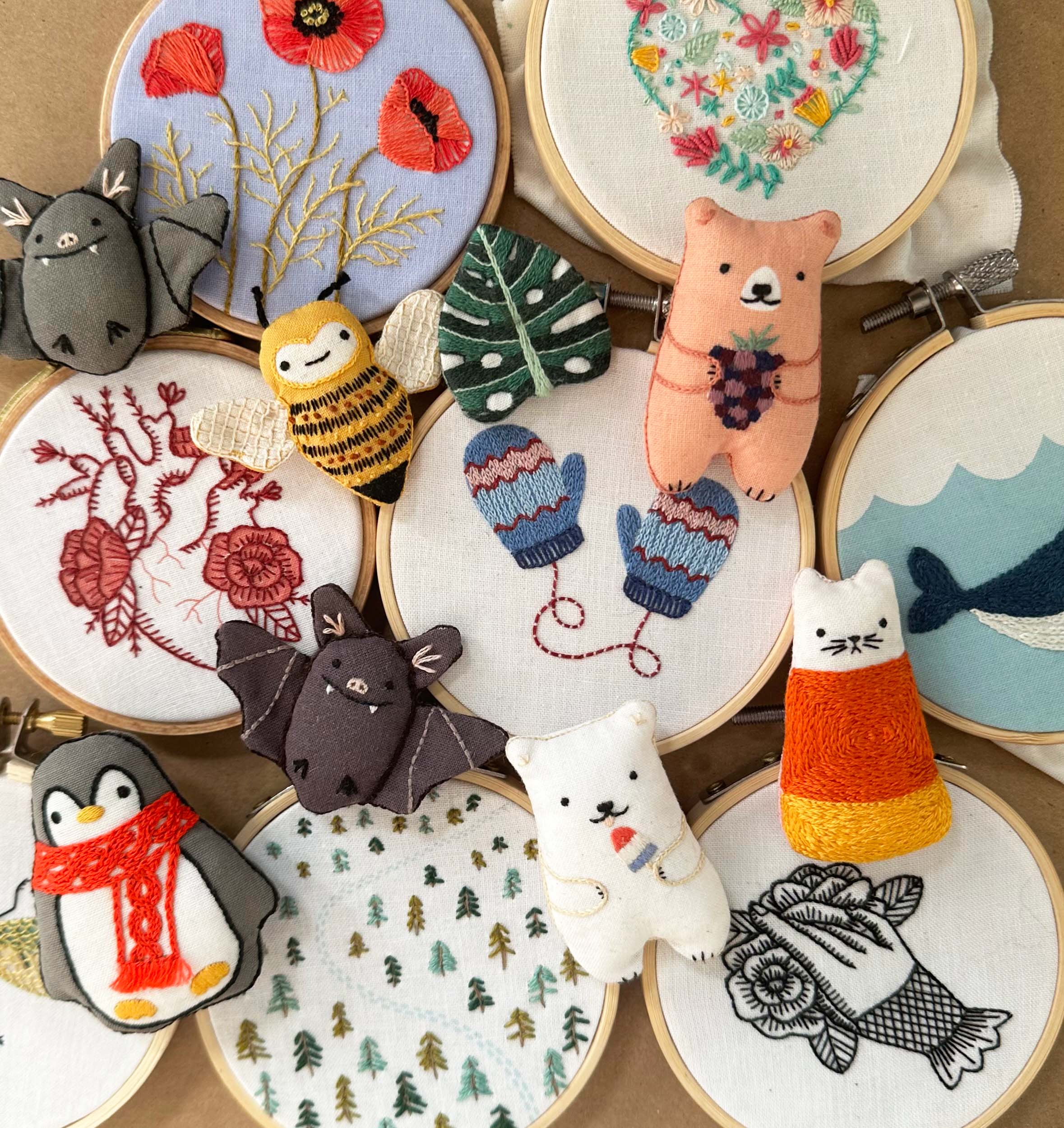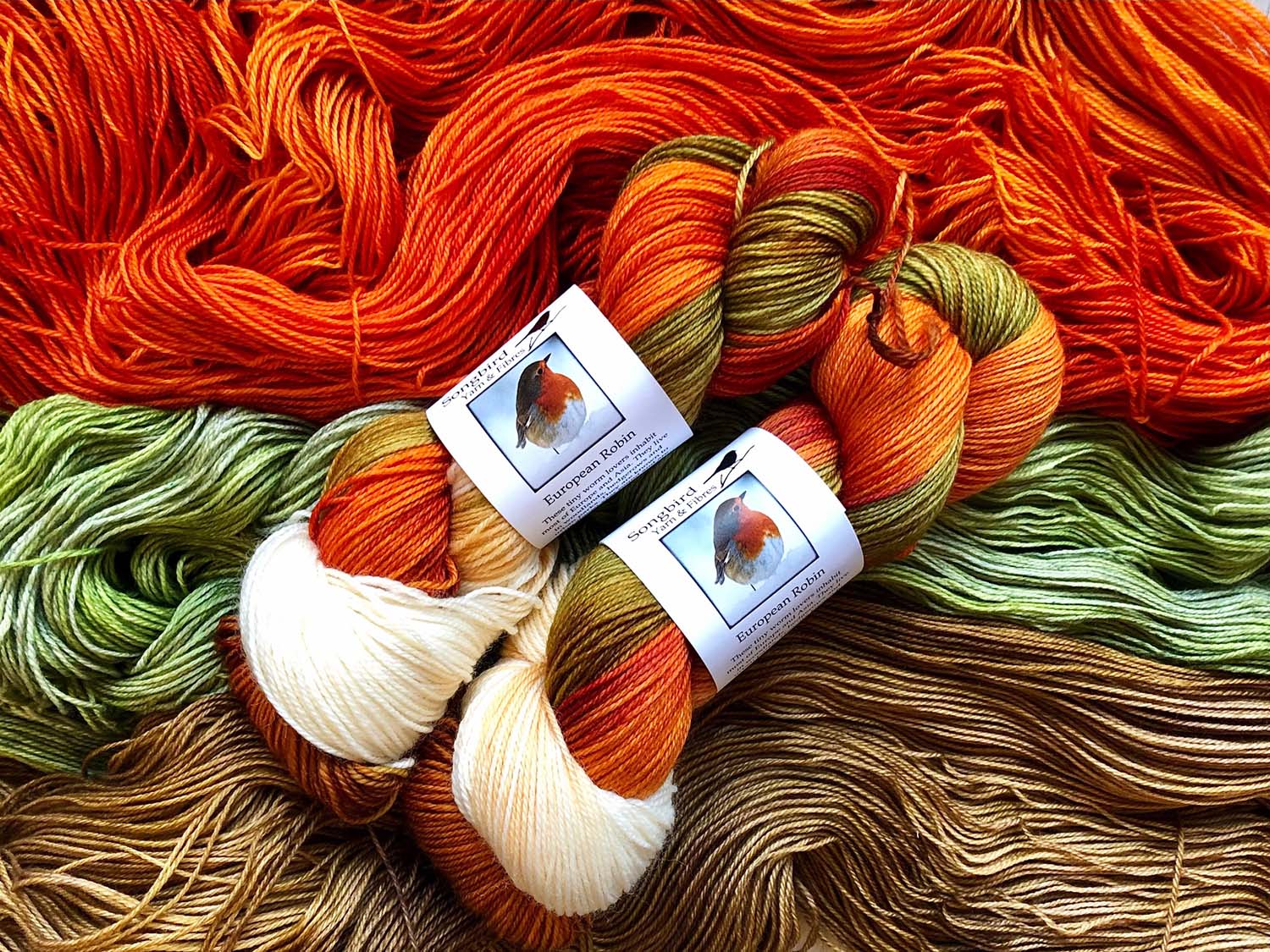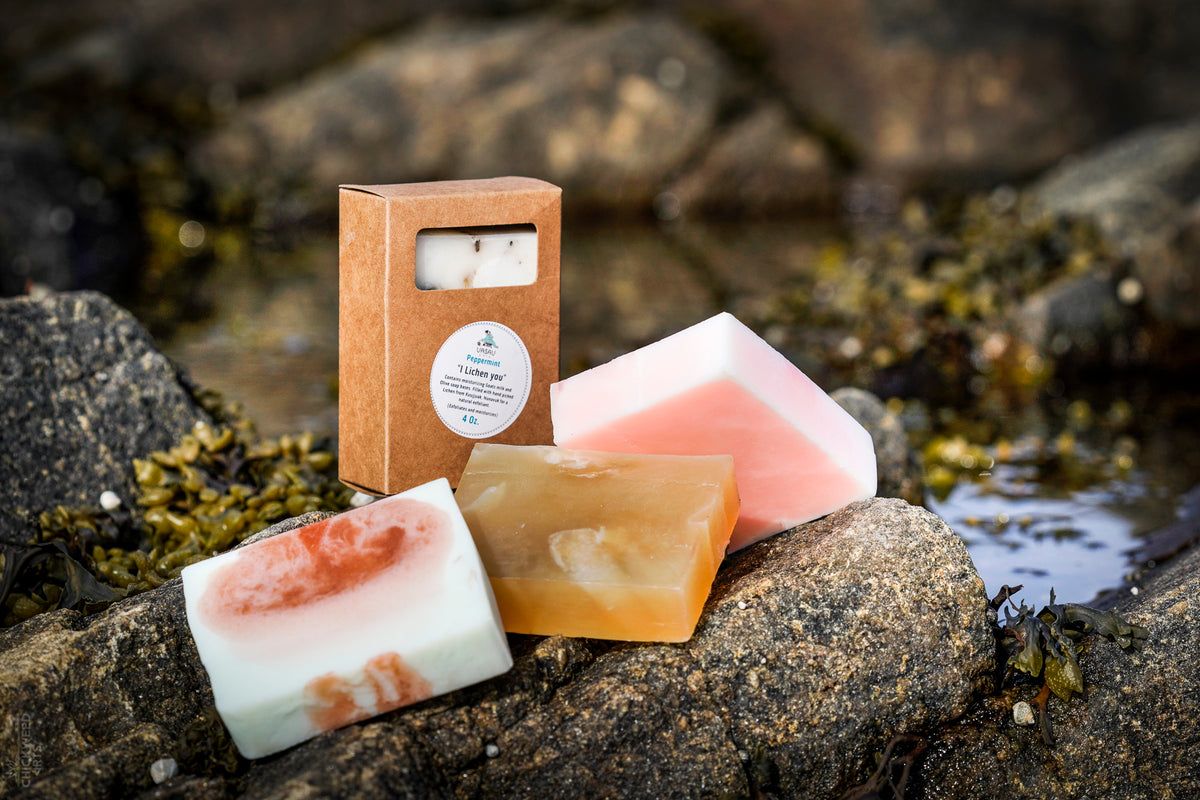When Laurie Dolhan started her embroidery kit company Hook, Line & Tinker, building a business that aligned with her values was top of mind. And as a resident of coastal Nova Scotia, the health of the ocean was a huge priority for her — which meant that avoiding plastic packaging became a focal point of her efforts. Now her kits are plastic free (even down to the labels on the embroidery floss), and she’s still looking for opportunities to improve. “I’m always on the lookout for other options,” she says. “Every step is worth it.”
Going plastic free is one way many makers are shifting toward more sustainable packaging. (See a couple more examples in the images below.) But it’s not the only path available. And with more and more shoppers demanding lower-waste and climate-friendly options, having a plan in place makes good business sense.
But which packaging options are the greenest, and where should you even start? Here are five steps to sustainable packaging success.
1. Reflect
First, examine your goals. Do you have a specific target in mind, or will you be happy with any positive changes you can make? Also think of your packaging from the customer’s point of view. Is it clear what’s recyclable and what’s not? Are you creating any friction points for them, such as making them feel guilty for having to throw out styrofoam peanuts or fancy boxes?
“Eco-friendly” is a broad term that encompasses a lot of different aspects of shipping, manufacturing and disposal. A few examples of goals might be:
• Reduce or eliminate plastic, which is problematic both when it’s made — it tends to be created from fossil fuels, and production uses a lot of energy — and during disposal, as for the most part it’s not recyclable, and it lingers in the environment for hundreds if not thousands of years.
• Switch to paper and cardboard that contain as much recycled material as possible, to reduce your packaging’s impact on forests and lower the energy needed to create it.
• Revamp your packaging so that your customers can dispose of it responsibly, and will understand exactly how to do so.
There’s an overwhelming amount of information and packaging choices out there, and it’s easy to get bogged down in the details. Instead, be strategic about where you can make the most impact, and do one thing at a time. “I wasn’t plastic free overnight,” says Dolhan. “We’re continually reducing packaging.”
2. Reduce
It’s the first of the three R’s (reduce, reuse and recycle) and the most important. The most eco-friendly option is always nothing at all, so start by looking for opportunities to shrink or eliminate elements of your packaging. Not only will you be reducing the amount of stuff that’s manufactured, but you’ll be limiting the amount of waste at the end of the line and, if you can get your package size or weight down, lowering shipping emissions, too.
Hook, Line & Tinker kits, for example, include embroidery hoops for stitching and framing. Originally, Dolhan says, they had plastic film around the top, which was an issue not just for sustainability reasons, but because it was annoying for customers to have to remove. With a little effort, she was able to find a supplier who could sell her hoops without plastic wrapping.
While it might be tempting to go in the other direction and create packaging and bags that are higher-quality and can be reused, that would likely be counterproductive, cautions Sarah Landstreet, founder and CEO of Georgette Packaging in Kitchener, Ont., which manufactures carbon-neutral product packaging and helps businesses navigate the packaging industry.
“We're at a point now where people have 20 cloth tote bags,” she says — as in, they don’t need any more. As for, say, cute, sturdier boxes, she’s skeptical how many customers would actually use them versus putting them straight in the recycling or garbage. “It would be interesting to know what percentage of your clients actually do this,” she says. “If it's only five or 10 or 15 percent, is that environmentally a net benefit?”
3. Research
Before committing to any decisions, be sure to do your due diligence on the options available to you. Greenwashing abounds, sadly. And in a lot of cases, labelling terms are unregulated, points out Landstreet. “I could make a bathtub and say it's compostable,” she says. “No one's going to stop me.”
Landstreet says that businesses should assess packaging based on its whole life cycle: how it’s manufactured, how it’s shipped and how customers will dispose of it. Often, this means weighing the pros and cons of different materials. For instance, plastic pollution is indisputably a bad thing, but plastic is lightweight; using a heavy material such as glass ultimately could be worse for the environment due to the additional fuel needed to transport it. As for paper, don’t assume it’s automatically more eco-friendly than plastic: a lot of what’s available is made from trees from old-growth forests, which we should be keeping around so we can breathe.
Landstreet also points out that communicating detailed information about your packaging is important so that customers can properly dispose of it and avoid misdirecting their waste. The challenge is that the details of what’s recyclable or compostable (or not) varies by municipality and region. “A lot of packaging that’s not intended to go to your particular recycling composting facility ends up there,” she says. “And it either makes the mix far less high quality or it adds extra labour for that facility to sort it and then, ultimately, truck it a second time to the landfill.”
As for Dolhan, she’s a big believer in reaching out to other makers for advice when you see packaging options you’re inspired by. “Makers support makers,” she says. “And people that are pro sustainability are super keen to help other people get on the boat, too.”
4. Replace
Now’s the time for the real work: actually replacing aspects of your packaging with more eco-friendly options. Some of the easier steps to take might be using paper with recycled content (the more the better) instead of new paper, or replacing plastic baggies with recycled-paper envelopes.
One switch Dolhan made was to switch the plastic she was packaging embroidery needles in for scraps of fabric — a waste material she had around anyways.
5. Repeat
So you’ve upgraded one aspect of your packaging. Success! Now, where can you make improvements next?
When you’re ready, start again at Step 1 and look for more ways to refine how you package your goods. This is especially important as your business evolves and grows: you might suddenly have retailers to think about, for example, or you might have reached a volume that opens up new possibilities in purchasing.
Most important is to celebrate the wins and be inspired by them to go further. “I think people feel like if they’re not doing it perfectly, it’s not worth doing at all,” says Dolhan. “But every step makes a difference.”
How do you want to improve your packaging, and what challenges are you facing? Drop by our packaging discussion to let us know!







